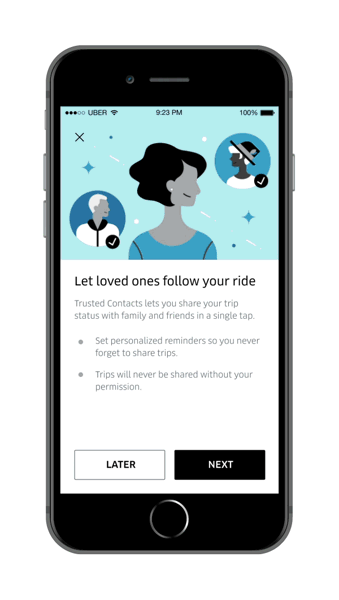While organisations dedicate large budgets into marketing their services to the outside world, there’s also been a rising demand among companies to communicate their purposes to a more immediate audience: themselves. SocialChorus, a startup that has built a platform to help organizations coordinate and communicate better with their employees, is announcing today that it has raised $12.5 million, funding that it will be using to expand its business (namely in EMEA with a new office in London) at a time when the company is already seeing a lot of growth.
SocialChorus says that recurring revenues are up 120 percent this year, with the company’s customer list including more than 100 of the world’s largest companies, including USAA, Phillips 66, Cargill, Sound Physicians, American Cancer Society, Kohler Co., Lendlease, Lloyds Bank, Discover Financial Services, TD Bank, PG&E, Lincoln Financial Group and PVH Corp.
“As digital transformation, employee engagement, employee experience trends converge, we believe that SocialChorus is well positioned to serve the needs of large global enterprises,” said Gary Nakamura, CEO of SocialChorus, in an emailed interview. It’s not yet profitable.
The round was led by Arrowroot Capital and Kohlberg Ventures, with participation from Western Technology Investment (a prolific firm that has backed Facebook, General Assembly, Climate Corp, and many others), and the company is not disclosing its valuation. The raise is to give the company runway for the next 12 to 18 months. “Our $12.5M capital raise was all that was needed to fuel our growth trajectory and achieve optimal operating fundamentals,” Nakamura said. The company has raised around $37 million to date, according to figures from PitchBook.
The funding comes at a time when platforms like Slack, Workplace from Facebook and Microsoft Teams are getting a lot of attention for how they improve communication among staff, especially workforces that might be spread across far-flung geographies. SocialChorus is addressing a different area: getting businesses to be able to create better communication out to its staff about the company itself, for example from an organization’s HR or IT or marketing teams, not only to employees but also to contractors, franchises and others.
“The need to improve employee experience has never been more critical,” Nakamura said. “Many of our customers are focused on digital transformation, and at the core, that is making sure employees know what digital transformation means and can support this change.”
In Nakamura’s view, and you may have noticed it yourselves if you also work in an organization using a lot of different communications tools. You may be using more than one channel to share what you are working on, questions that you might have, and your availability, not to mention alerts and other information that might still be getting passed via email and other means.
“Technology, in some ways, has made it more difficult because companies have more tools to communicate,” he said, and that becomes a challenge for people who are supposed to be focused on communicating things to the whole staff. “Instead of focusing on the important job of informing and aligning employees, communicators are overwhelmed with simply trying to keep the channels filled. And the more channels there are, the less workers seem to pay attention.”
The idea with SocialChorus is that it helps those needing to send out company messages, by letting them publish both on the SocialChorus app itself, but also to whatever other platform others are using. including SharePoint, Slack and Workplace by Facebook via API or RSS integrations.
The potential paradox here is that if you are a company using a multitude of platforms, you may have already lost the attention of some staff who want to disengage from all the noise, and also that SocialChorus simply becomes one more creator of the noise. The other is that you could potentially use the other apps that integrate with it as a replacement for what you are using SocialChorus to do.
SocialChorus and its investors believe that there is a place for a dedicated app, however, which provides those with a focus just on communicating information top-down to staff, around specific areas like HR, with a platform to do it. Nakamura said that this is particularly important in offices, for example, which are either downsizing or expanding through M&A: there is material you need to communicate to specific employees in an environment that is separate from where you are, for example, discussing your next work project.
“We passed on many workplace communication / collaboration / engagement opportunities as many of them were viewed as ‘nice to have’ tools and it showed up in their unit economics,” said Kareem El Sawy, Partner at Arrowroot Capital. “SocialChorus was an exception as it has built a truly enterprise-level platform that customers view as mission-critical to their daily operations.”


 Uber is testing the automatic location sharing with 911 dispatchers in seven cities: Denver, Colo., Charleston, S.C., Nashville, Chattanooga and Tri-Cities, Tenn., Naples, Fla. and Louisville, Ky. In terms of determining which cities to deploy automatic location sharing, Uber Director of Product Management Sachin Kansal told TechCrunch said it came down to “readiness of cities” and “how fast some of them were able to move in terms of training agents and testing functionality.”
Uber is testing the automatic location sharing with 911 dispatchers in seven cities: Denver, Colo., Charleston, S.C., Nashville, Chattanooga and Tri-Cities, Tenn., Naples, Fla. and Louisville, Ky. In terms of determining which cities to deploy automatic location sharing, Uber Director of Product Management Sachin Kansal told TechCrunch said it came down to “readiness of cities” and “how fast some of them were able to move in terms of training agents and testing functionality.” Given that some situations may entail a problematic driver, Uber drivers do not get notified when a rider seeks 911 assistance. But it’s worth noting the driver would obviously hear the passenger on the phone.
Given that some situations may entail a problematic driver, Uber drivers do not get notified when a rider seeks 911 assistance. But it’s worth noting the driver would obviously hear the passenger on the phone.